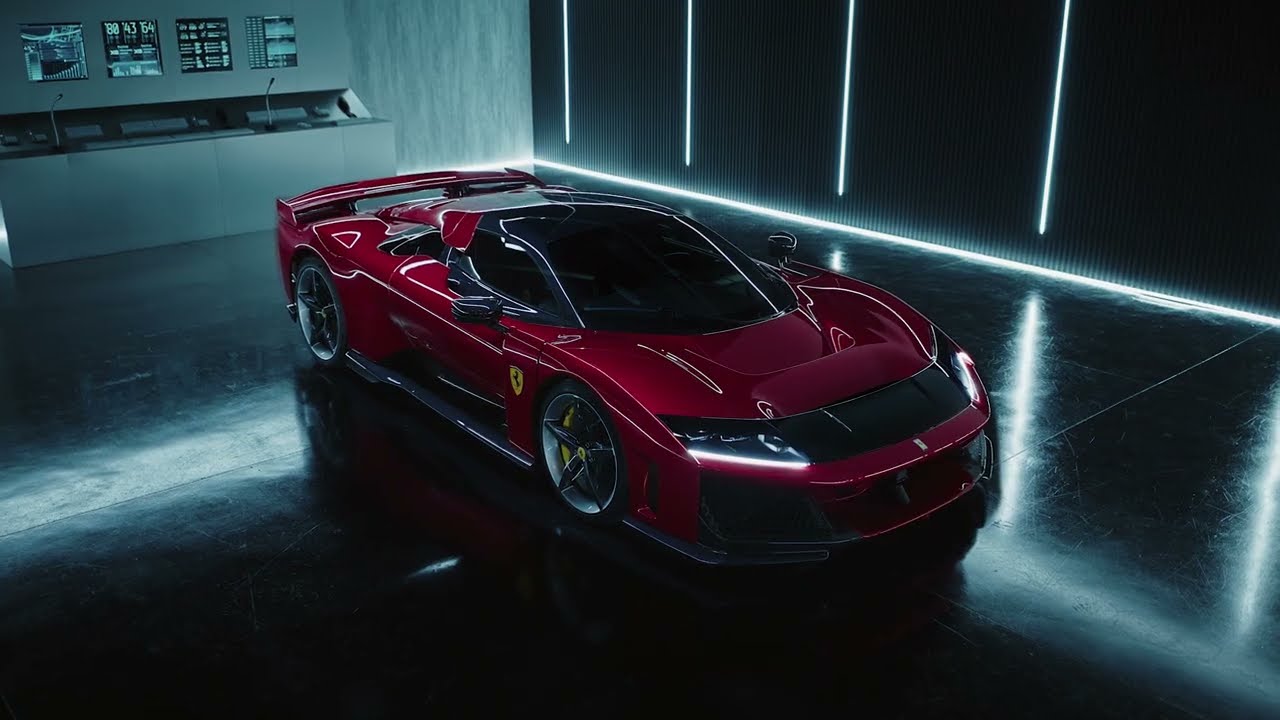

Just one week after the long-awaited reveal of the new McLaren hypercar, a replacement for the legendary P1, Ferrari is offering a nice surprise to all of its fans. Much more than a new iteration of Ferrari expertise, the latest one is a concentrate of history, performance, innovation and brutality. This is the F80.
.jpg)
You don't have to see this new Ferrari to guess its pedigree! Its name, F80, is a direct evocation of the brand's line of hypercars, although the Maranello firm has gotten a bit lost in names over time. As you can see, the F80 descends directly from the 288 GTO, F40, F50, Enzo and LaFerrari (whose internal code name is F70). That being said, the F80 is not only a logical continuation, but above all the celebration of Ferrari's 80th anniversary in 2027, when the brand's first models were released. And with a name like that, expectations are high.
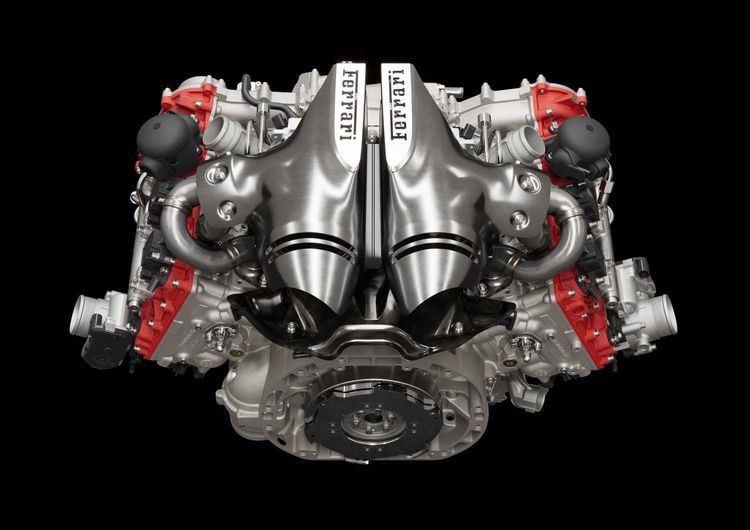
Before discussing the aesthetic aspect of this F80, it seems interesting to study the will of Ferrari and the mechanics chosen for this new model. Because yes, the Scuderia is saying goodbye to the V12, and hello to the twin-turbo V6. But be careful, make no mistake: the V6 used here comes directly from the engine block of the 499P, which has won the 24 Hours of Le Mans three times! As Ferrari announces, this F80 is designed for performance, which involves some tough choices.
We therefore find a twin-turbo V6 with a displacement of 3.0 liters, open to 120°, assisted by two electric turbines, developing no less than 900 horsepower alone. That's a gain of 237 horsepower compared to the 296 GTB's V6, which is already well established. The F80's engine offers a maximum speed of 9,200 rpm and an impressive output of 300 hp/l. An eight-speed dual-clutch gearbox handles the surge of power, 1,200 horsepower in total, thanks to the presence of three electric motors providing an additional 300 horsepower.
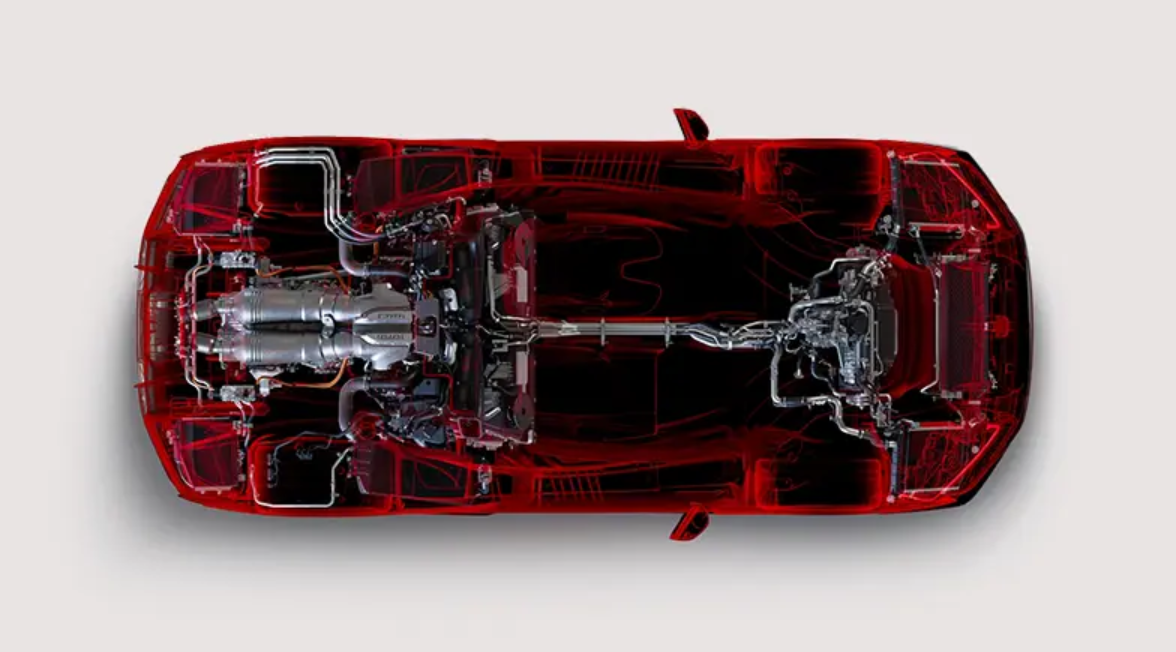
The F80 does not offer a classic hybrid mode, its battery having a capacity limited to 2.3 kWh. Above all, it is used by nine electromotors located in strategic locations: turbos, controlled suspension, rear spoiler... Two electric motors installed at the front provide all-wheel drive, allowing 1,200 horsepower to be transmitted to the ground without loss. Result: a 0 to 100 km/h shot in 2.15 seconds, the 0 to 200 km/h in 5.75 seconds, and a top speed announced at 350 km/h. The numbers speak for themselves: the F80 already holds the Fiorano circuit record, two seconds ahead of the SF90 XX and more than four seconds ahead of the LaFerrari.
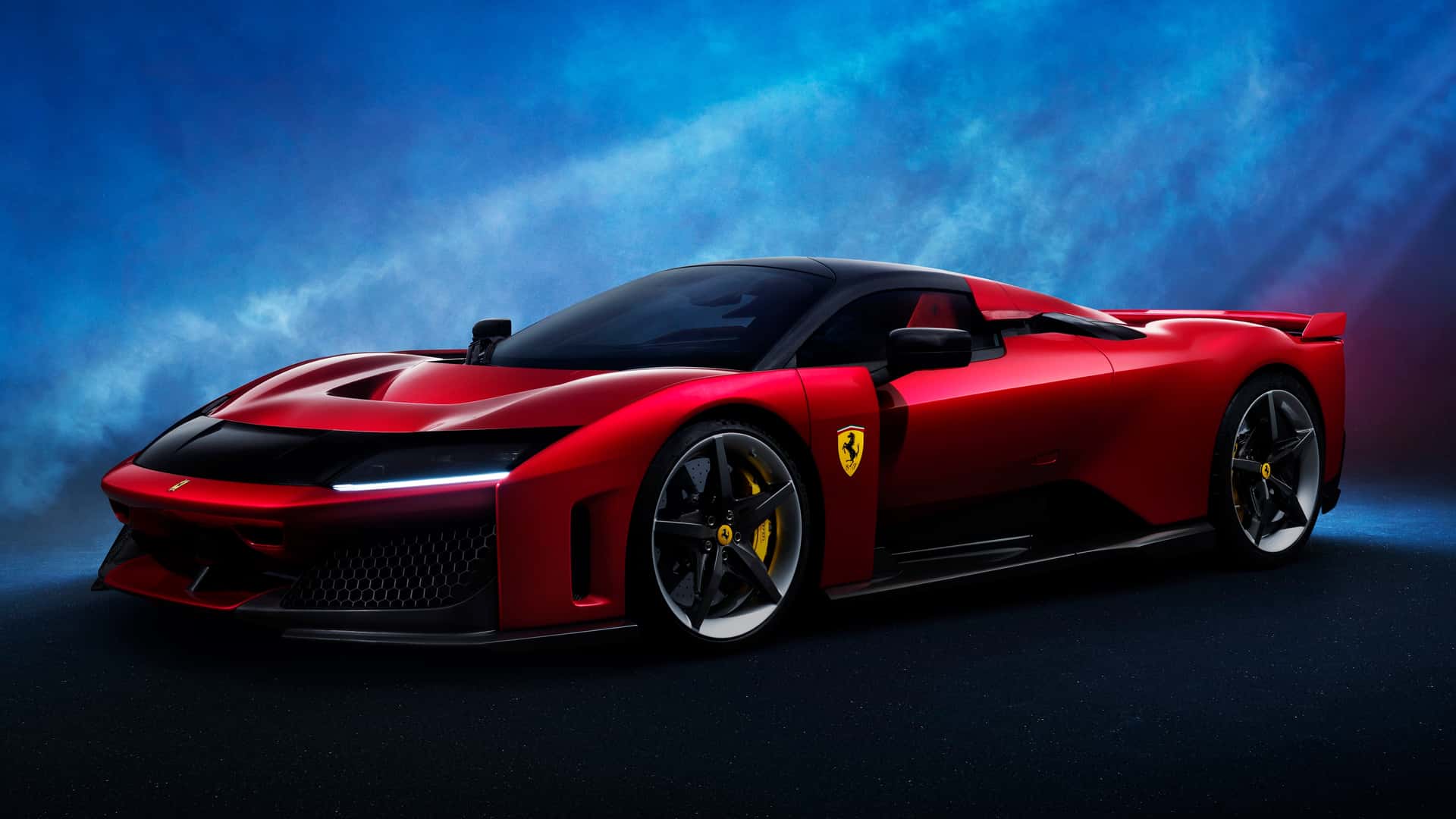
After this overview of the heart of the F80, it is time to discuss its aesthetics, and one thing is certain: it leaves no one indifferent, whether for good or for bad. Because above all else, Ferrari engineers and designers have chosen to put performance first, relegating aesthetics to the service of aerodynamics. This F80 is neither sensual, as the F50 could be, nor elegant, like the LaFerrari, but quite brutal, imposing. The lines are taut, the edges marked, punctuated by a few curves, especially in terms of the impressive wheel arches. The front is marked by a black band evoking the 12Cilindri, overlooking large air intakes and accompanied by an S-duct in the spirit of the F8 Tributo or 458 Speciale.

The prominent hips dominate 20-inch front and 21-inch rear carbon rims, fitted with Michelin Pilot Sport Cup or Cup 2 R tires. At the rear, it's impossible to miss the active spoiler: deployable over 20 cm, it can also be rotated to operate in DRS or airbrake mode. We also note the presence of six cylinder vents, a unique central exhaust outlet, as well as the essential butterfly doors, giving us access to the cockpit.
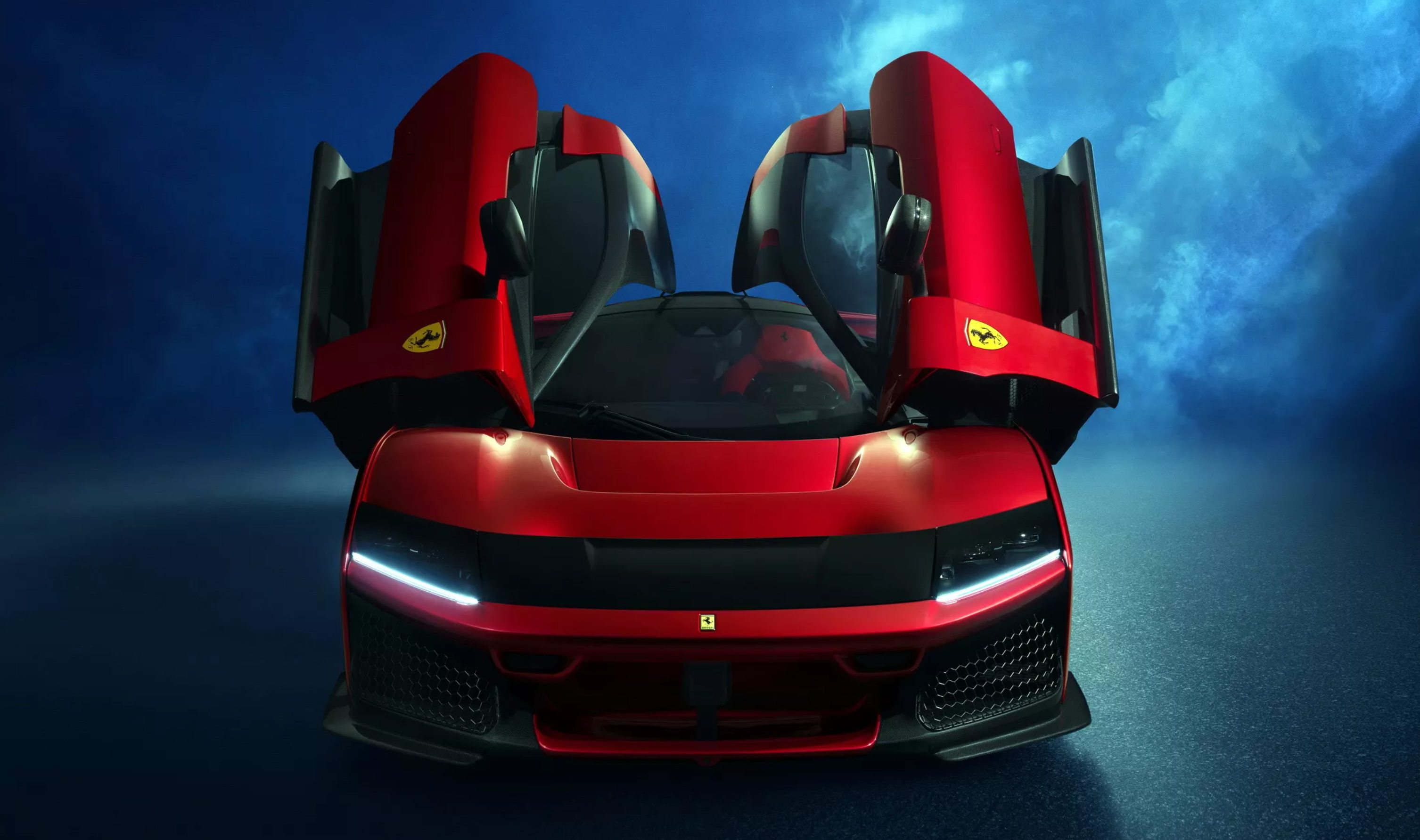
Installation on board is simpler than expected, in particular thanks to the door sill integrated directly into the butterfly doors. No need for contortion: access to the F80 is surprisingly easy, and the atmosphere is resolutely focused on the pilot. The dashboard, entirely oriented towards the latter, creates a real feeling of envelopment, worthy of a cockpit. Everything is designed for the driver, so much so that the passenger is satisfied with a fixed seat, integrated into the structure, without the possibility of adjustment. A screen placed in front of him nevertheless allows him to follow the main information, because the central instrumentation remains invisible from his position.
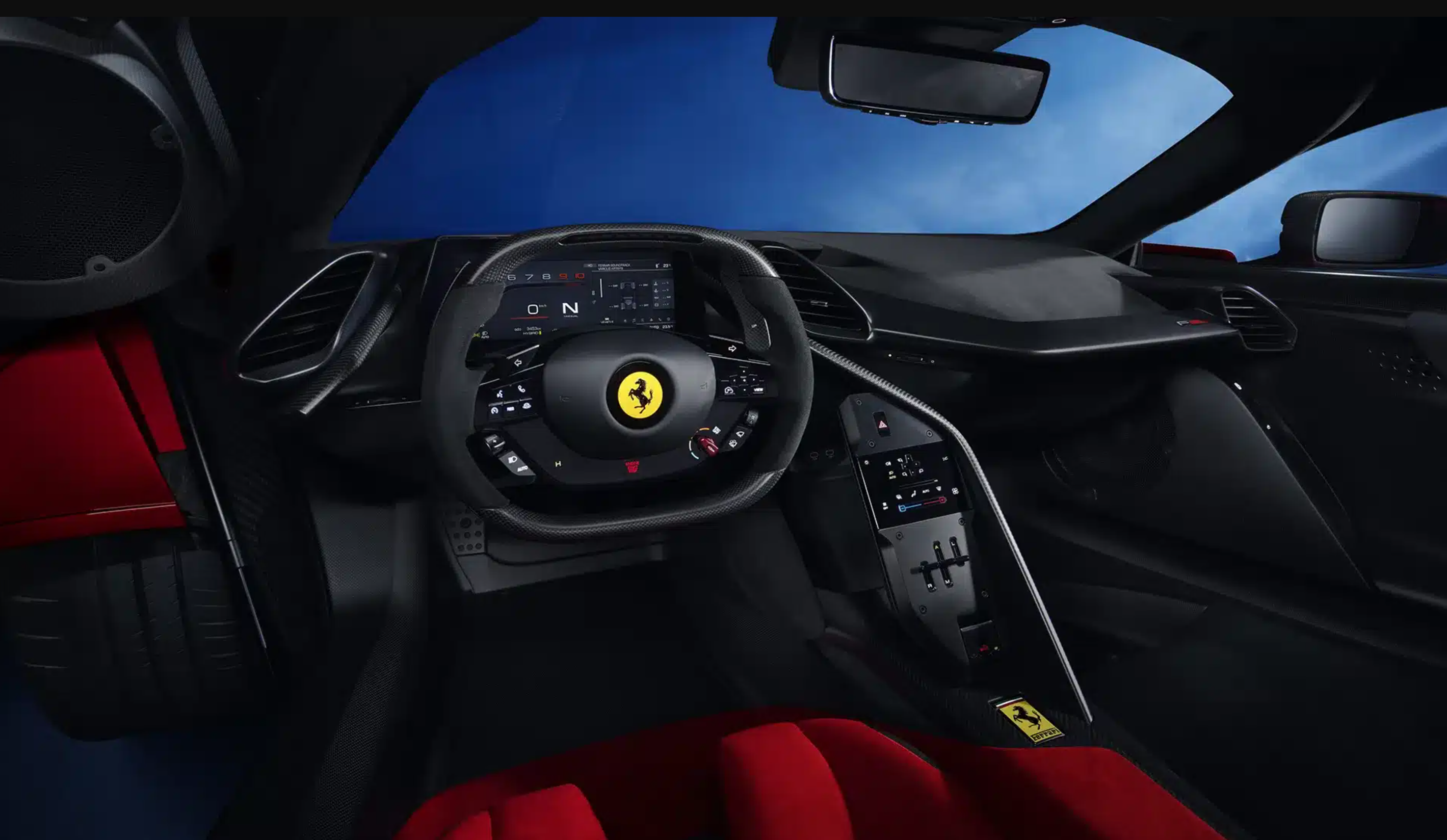
On the driver's side, Ferrari is introducing a new steering wheel, with more angular shapes, similar to that of a competition model. It marks the welcome return of physical buttons, to the delight of purists. The entire cabin is simple, almost raw, as evidenced by the visible screws on the floating center console. Finally, note the presence of a digital central rearview mirror, which is essential because of the obstructed engine cover.

This Ferrari F80 is certainly worthy of its lineage, no doubt about it. Although its aesthetic can be divisive, it is seen as a performance machine rather than a work of art, and this radically changes its perception. The planned 799 copies were all reserved as soon as it was announced, despite a price of 3.6 million euros. The F80 will directly confront the McLaren W1, which is very similar in their proposals and performances: two cars that take us back a few years to a certain “Holy Trinity”. While waiting for the Porsche iteration, we can't wait to see the first F80s on the road and on the racetrack, for the lucky ones at least!
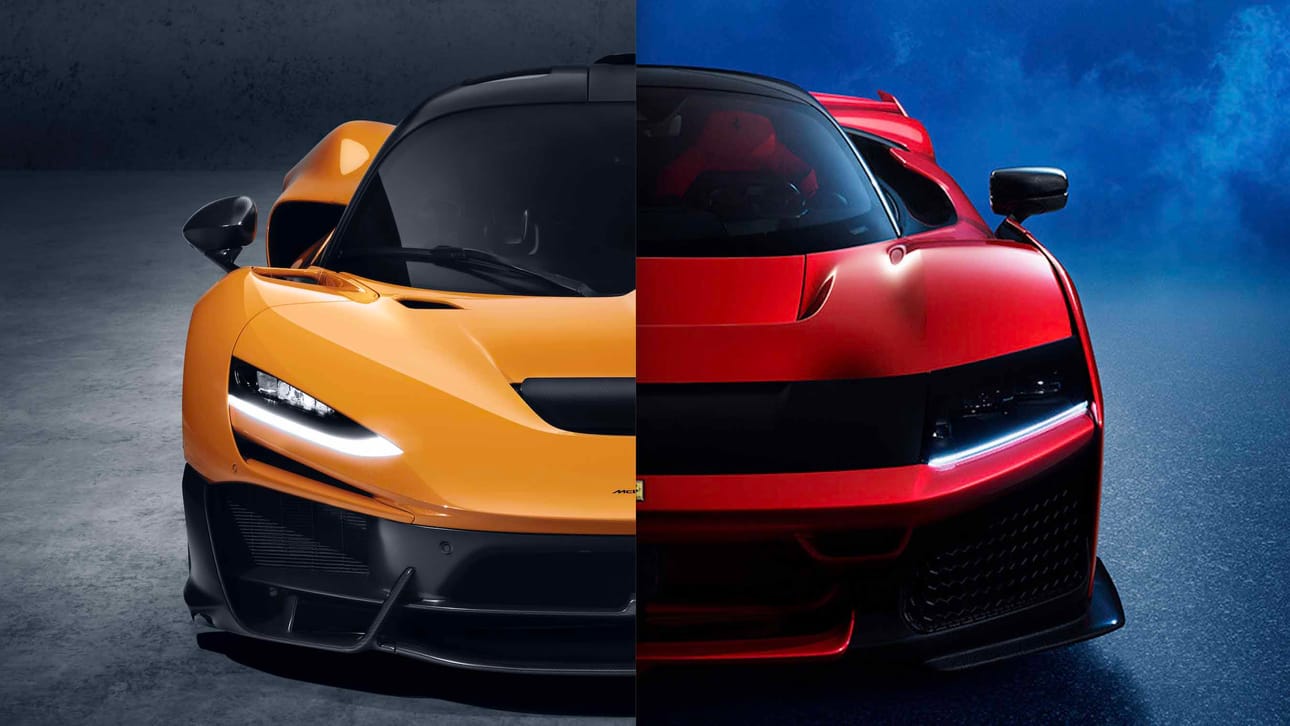
Does destiny exist? A vast, almost philosophical question that engineers and Maserati enthusiasts would unhesitatingly answer in the affirmative. Founded in 1914 in Bologna by the Maserati family, the brand went from a simple mechanical workshop working on Isotta-Fraschini to a real competition department in a few years. In 1926, the Type 26 was born, the first homemade creation and the first to feature the Trident inspired by the Neptune Fountain in Bologna.
There is always that little hesitation when preparing for a trip. The desire to take your exceptional car, to enjoy every kilometer, to make the road an integral part of the experience... and, at the same time, the constraints. The logistics, the risks, the uncertainty of arriving serene. Too often, we give up, leaving our car where it is, sheltered but immobile. This is exactly where Carsup is changing the situation. Travelling in your car should never be a cause for concern, but a simple and smooth pleasure.
There have been pivotal years in Formula 1. Seasons where you feel that something is changing, where certainties waver, where engineering is getting the better of habit. 2026 is one of those seasons. Regulations are changing, cars are being transformed, engines are entering a new hybrid era, and even the grid is welcoming new faces. Cadillac is coming. Audi is getting ready. F1 is about to write a chapter where anything is possible again. And that is undoubtedly what enthusiasts were waiting for: a discipline that reinvents its own future.
Didn't find the answer you were looking for?
Contact us, and an expert will respond promptly.